The Bike:
To begin with, the header photo doesn’t show a ‘Moustache J All’ bike; rather, it’s a high-end mountain bike that lacks a few features that would make it my perfect off-road and all-road bike. First of all, there’s a major hurdle for me due to my worn-out hips, which make it challenging—and sometimes impossible—to get on a traditional frame. To be functional for me, the bike needs an open frame.
Now, true mountain bikes are generally hard to find with an open frame. There are some options, but it’s technically tricky because of the high stress these bikes endure. To address this, manufacturers often place the crossbar at an angle, which is a compromise to accommodate both men and women. However, this design doesn’t solve my issue. Luckily, I’ve found a French alternative. The French, after all, have a track record for pioneering technical innovations that also maximize comfort—just think of Citroën cars with their air suspension!
Although I wasn’t looking for air suspension on a bike, a French company have come up with a solution for my needs: the ‘Moustache J All’. This bike has a single-piece open V-frame and a fully independent drivetrain, where the motor, pedals, chain, and rear wheel operate separately from the main frame, pivoting on a single, sturdy central axle—similar to some trail motorcycles. It’s a robust, relatively lightweight, and comfortable design, perfectly suited for the toughest off-road challenges, with the bonus of added comfort as the cherry on top!
On top of that, With the Bosch 250-watt range extender on my Moustache J All mountain bike, I now have a total power capacity of 875 watts (625W from the main battery plus 250W from the extender). This additional power greatly extends my bike’s range, allowing me to cover up to 50% more distance, depending on terrain, riding conditions, and assist level.
With this setup, I can confidently take on longer trails and challenging routes, knowing I have the extra endurance I need for extended adventures.In the Touring mode with a combined battery capacity of 875 watt-hours, you could typically expect a range of approximately 80 to 120 kilometers (50 to 75 miles), depending on factors like terrain, rider weight, wind conditions, and elevation gain.
This is how the bike looks naked:

Then I added a luggage rack—it might look a bit unusual, but thanks to the ingenious system, all the luggage is fully suspended as well – the photo is different from my bike because there is no derailleur in this photo.

At this point, I should mention that this bike is available worldwide—from the far north to South Africa, and from America to Australia.
Technical Specs:
The Moustache J All mountain bike is crafted for serious off-road adventure, combining power, precision, and a uniquely effective suspension system that makes challenging trails more accessible and enjoyable. One of the standout features is its pivot point suspension system, anchored by a robust cast aluminum central frame section.
This central part serves as the bike’s backbone, made from a single cast aluminum piece to ensure strength and durability while keeping the weight low. Unlike standard frame designs that use multiple welded parts, this cast structure provides greater rigidity, which enhances overall stability. By reducing flex in the frame, it helps the suspension work more efficiently, absorbing impacts and keeping the rear wheel steady on uneven terrain.
The strategically positioned pivot point in the suspension system allows the rear wheel to move in a smooth arc, maximizing traction and control on bumpy trails and rough descents. This pivot placement is critical, as it isolates the suspension from the force of pedaling. Known as anti-squat behavior, this design reduces the energy loss caused by “pedal bob” (when pedaling compresses the suspension). As a result, your pedaling power translates directly into forward motion, providing a smoother, more efficient ride.
This innovative suspension setup works seamlessly with the 625W battery and 11-speed derailleur, delivering a balanced, power-efficient ride that climbs smoothly, descends confidently, and takes on challenging terrain without losing grip or stability. With the Moustache J All mountain bike, you get a truly integrated design where every element, from the cast aluminum frame to the pivot point suspension, works together to elevate your off-road experience.
Here, the bike is equipped with a custom camera case and pannier bags for rain gear, snacks, drinks, and more :
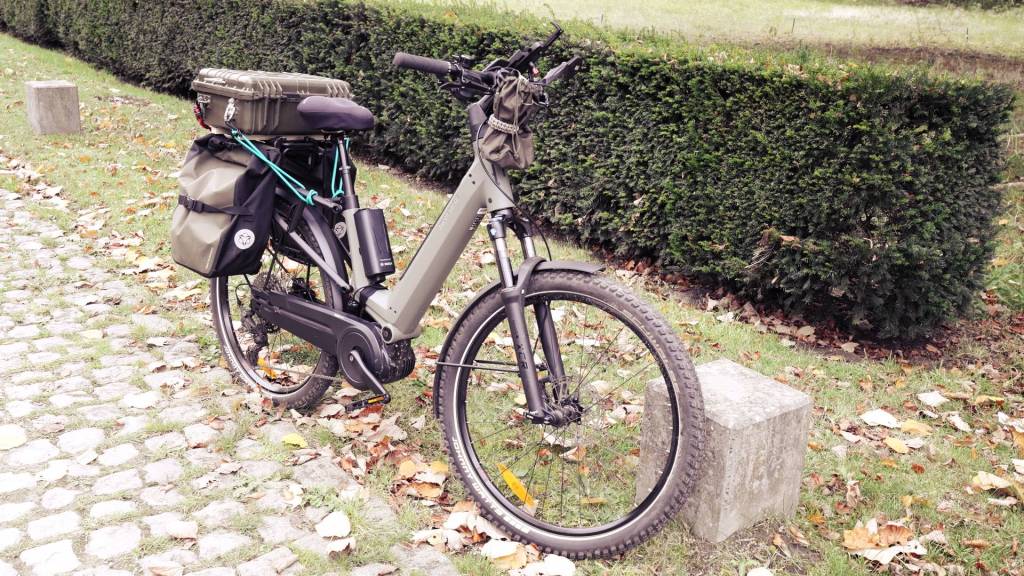
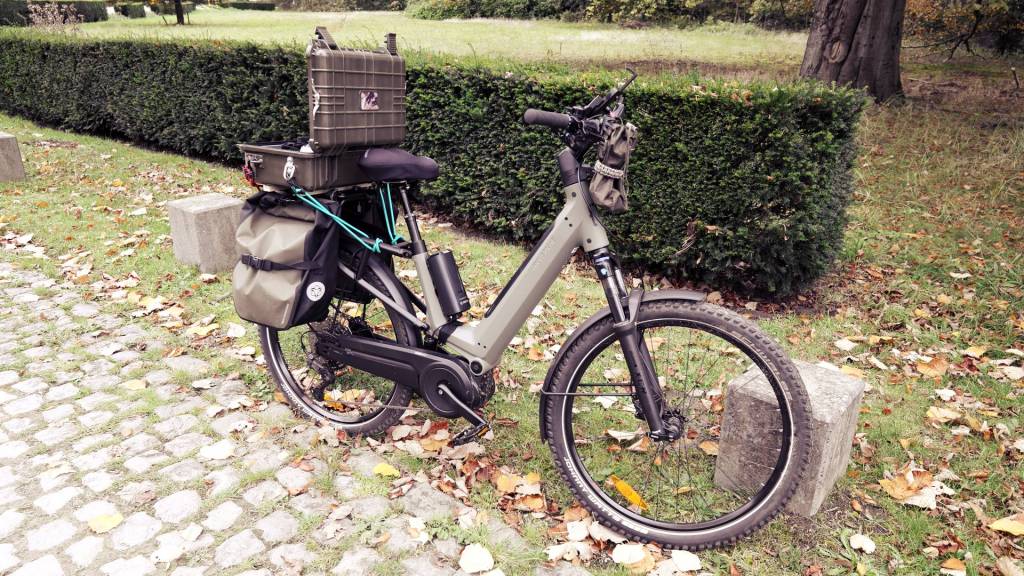
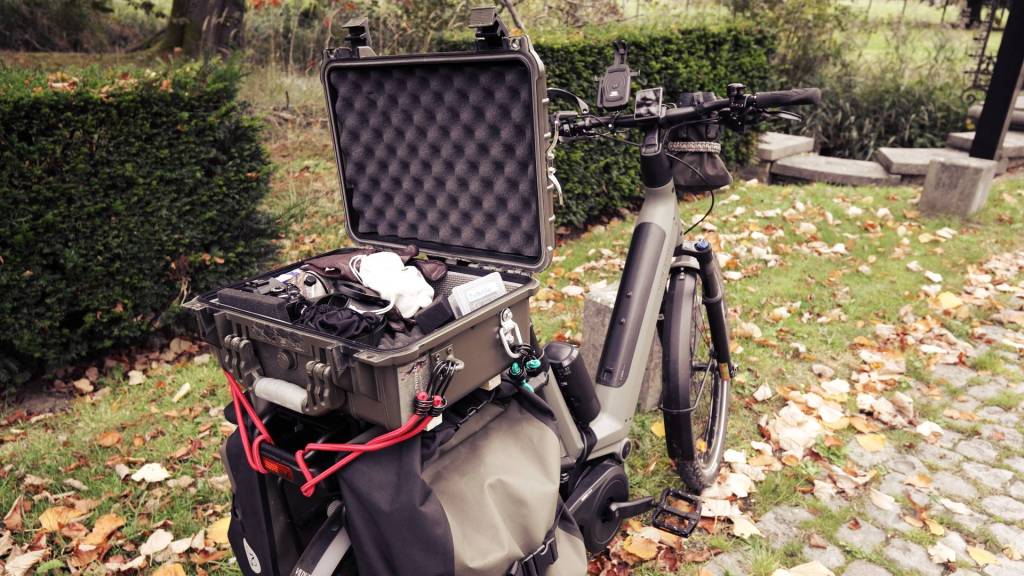
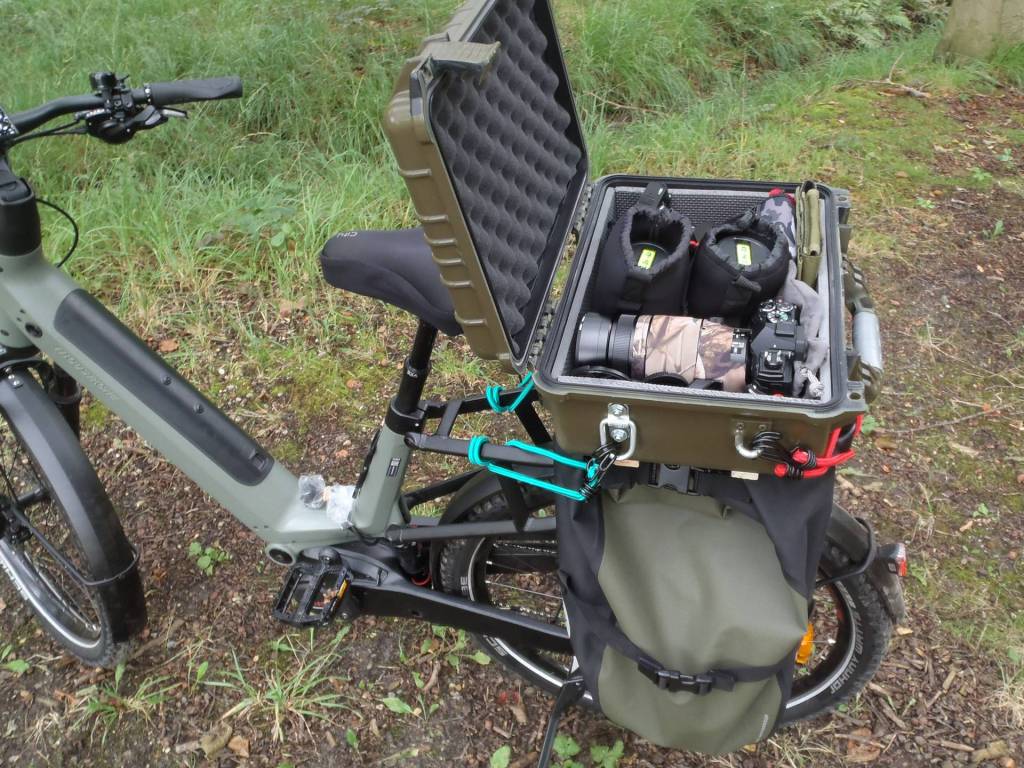
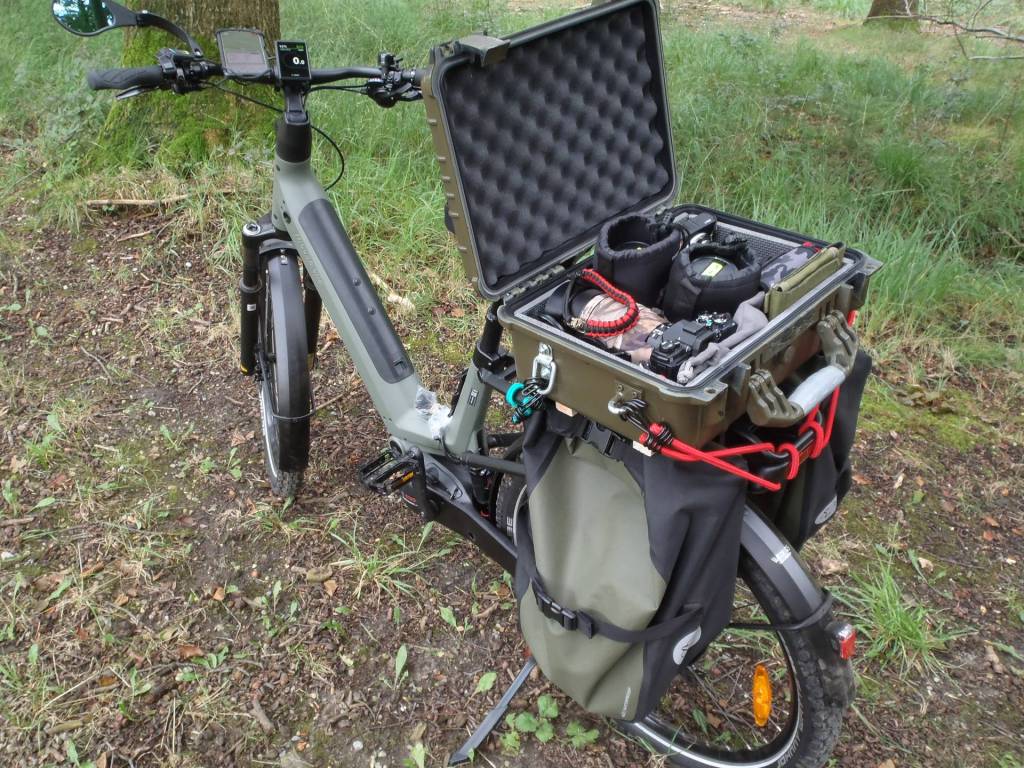
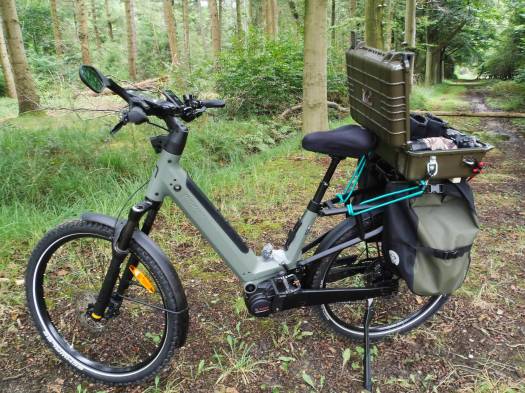
The Camera Case :
Well, it took me a long time to find a solution for transporting my camera on the bike. I used various bags, like a regular camera bag, a Billingham, and a Domke F7, but nothing really worked well. The main issue was that I couldn’t access my gear quickly. So, I needed a solution that would be easy to open while still securely attached to the bike – and hopefully on top of that waterproof and shockproof. The answer was a PP camera case—waterproof and equipped with a pressure valve.
I chose a hard PP camera case that I’ve had for years. This specific model has been modified several times, and this time it’s exactly how I want it. A PP case could also be an ABS case, as both are sturdy enough for what I need. My case is from HO Michielsen in Baarle Nassau and has the following specs:
- Dimensions: 40.6 x 33 x 17.4 cm (L x W x H)
- Volume: 14 liters
- Weight: 2.79 kg
- Material: PP (flame-retardant)
- Includes 3 removable foam layers: Egg crate foam in the lid and pick-and-pluck foam in the case
- Equipped with 2 holes for padlocks (not included): Ø 10 mm
To give an idea of what it can hold, in the examples here I usually use the Leica 100-400mm lens combined with the E-M5 MKIII. However, when I’m specifically heading out for deer, I take the OM System 100-400mm with teleconverters or the Olympus 300mm Pro—it all fits. One camera with the three long lenses, or one telephoto with one or two additional cameras, … And because everything lies flat, it’s very accessible, giving you quick access in any situation.
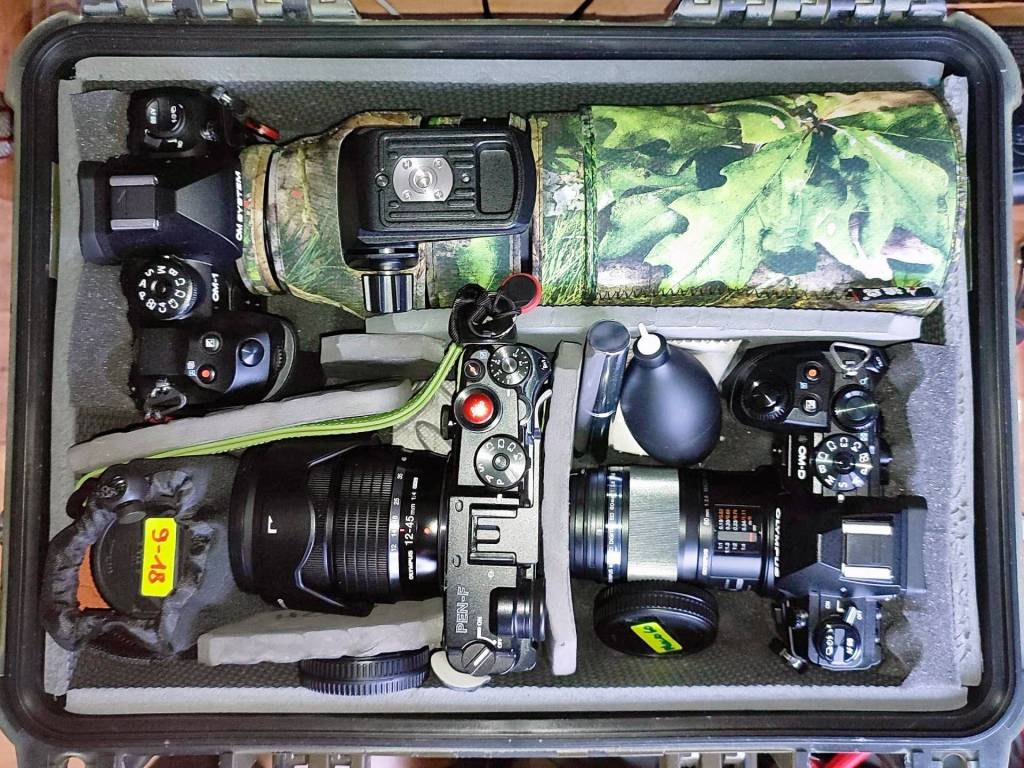
Over the years, I started drilling holes in the case—first for a loop to attach a strap, then a second one. Unfortunately, I couldn’t find the first model anymore, so I installed a movable loop instead. I also thought it might be handy to add two hooks (horn cleat) on the lid to secure a bag, jacket, or other items. The most important requirement was that I could always open the case without needing to remove the elastic straps.
To raise the case slightly from the bike rack and ensure it wouldn’t slide off, I added some wooden slats. This keeps the case stable and securely in place even with all the straps on.
All the screws, bolts, and nuts are – on the inside – secured using waterproof washers (washers coated with a bitumen layer for a watertight seal). To protect my lenses and cameras from any potential damage caused by the nuts, I’ve covered them with a piece of duct tape for added safety. I kept only the top layer of internal foam, and inside the case, I included just the base plate along with an additional 10mm foam tile to absorb the heaviest shocks. I used the same 10mm foam along the edges and also created a few dividers that I can adjust or reposition based on the contents of the case. Even though the dividers are loose, everything stays perfectly in place because, when the case is closed, everything is pressed between the top and bottom foam layers.
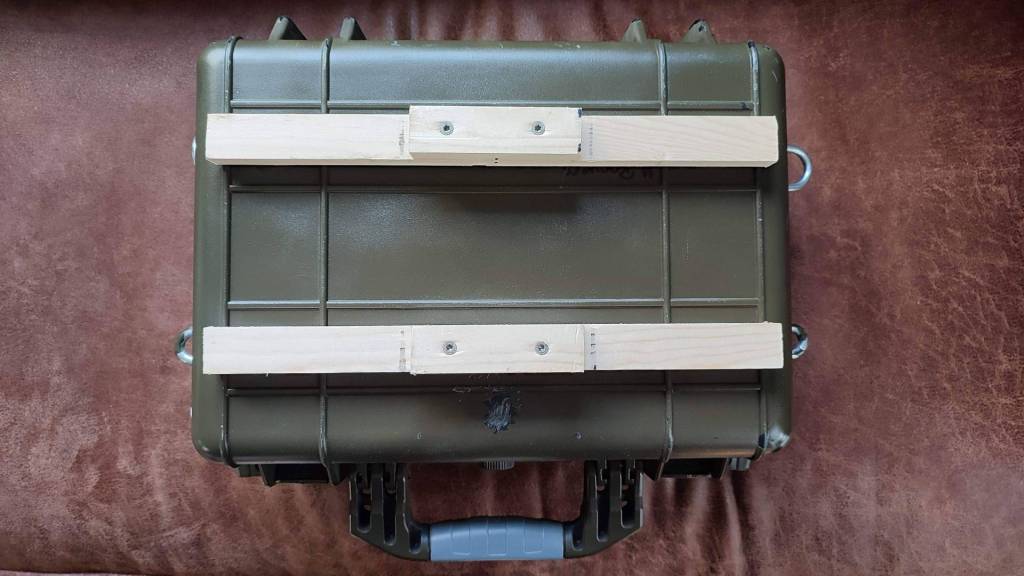
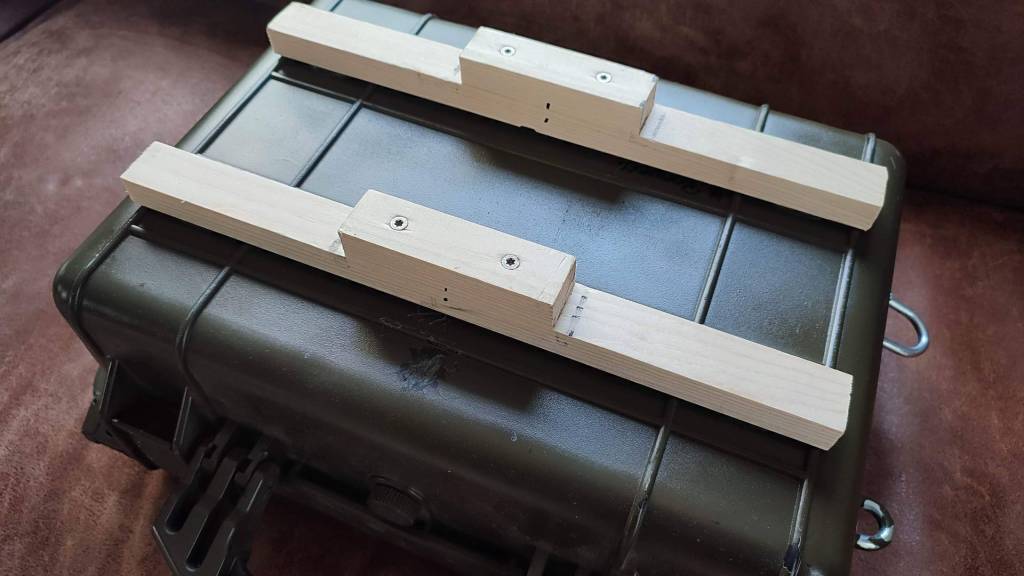
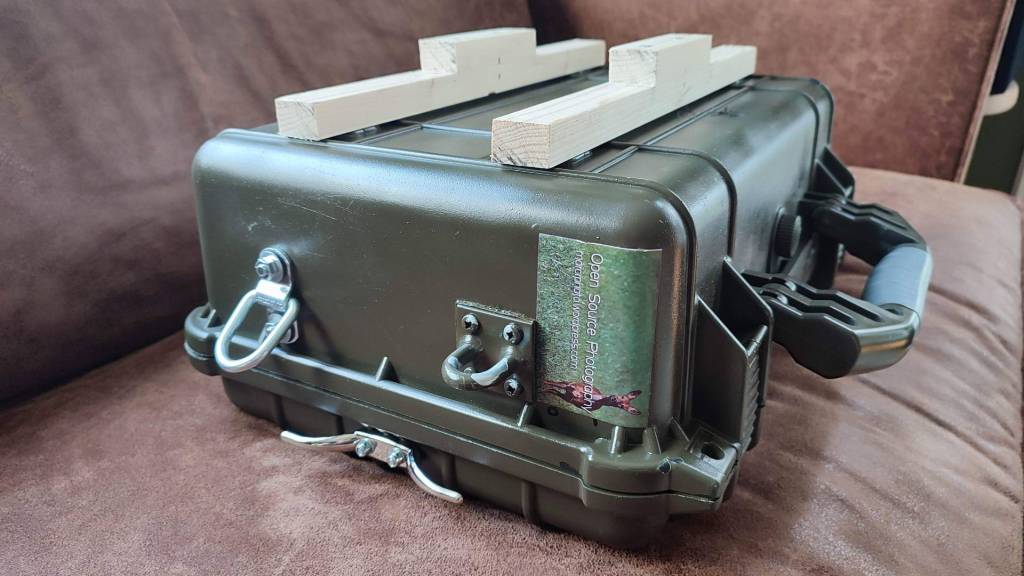
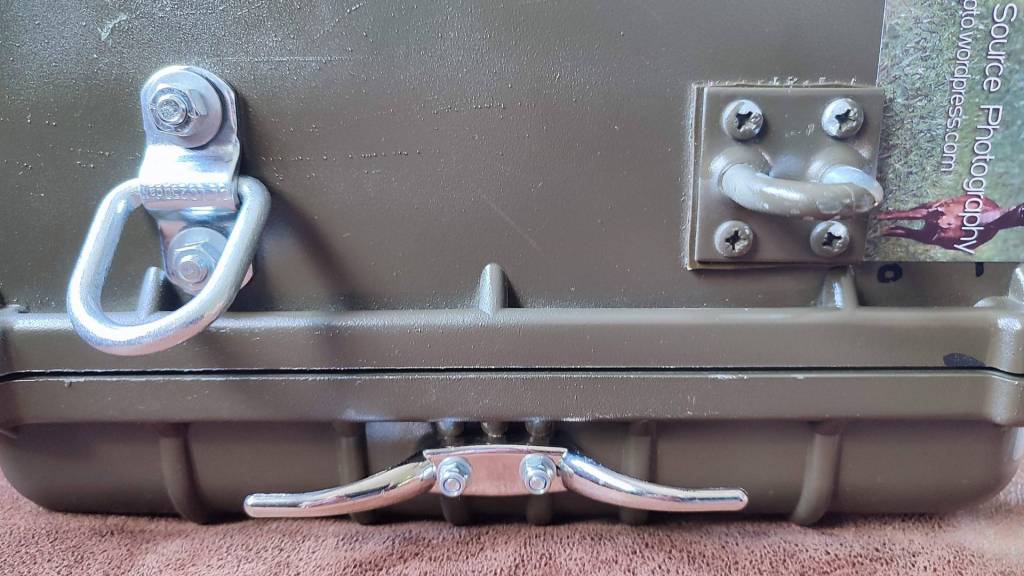
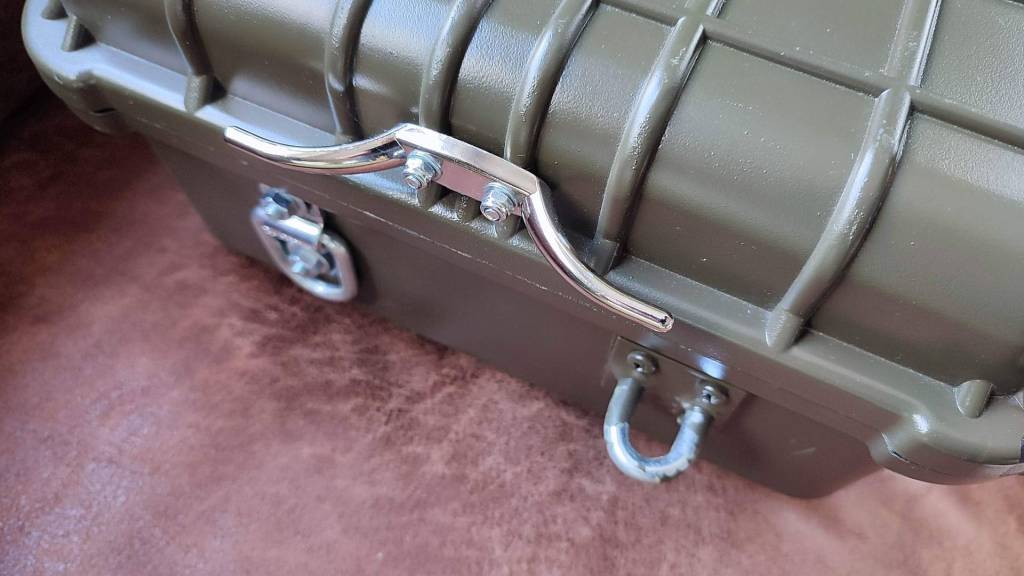
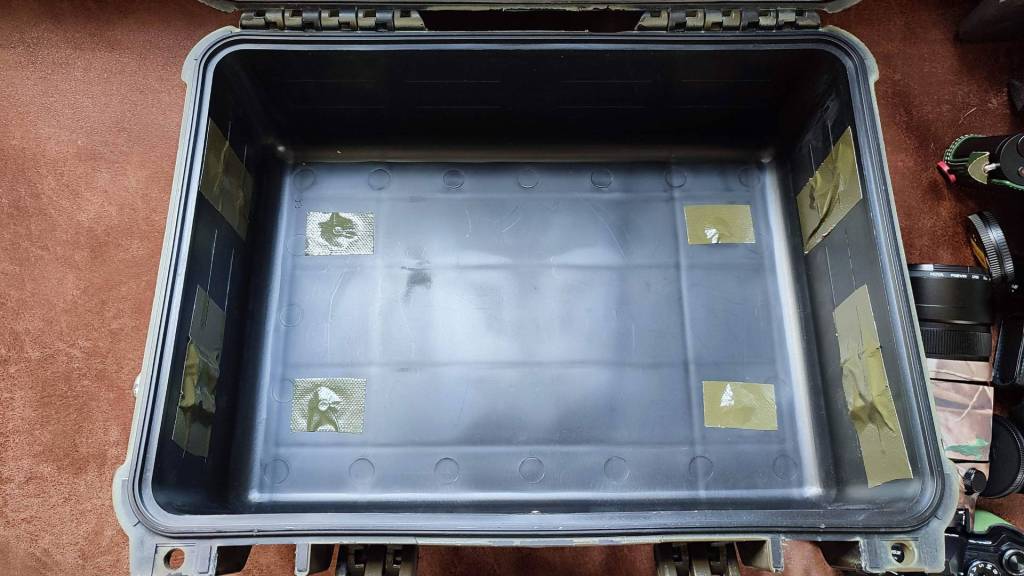
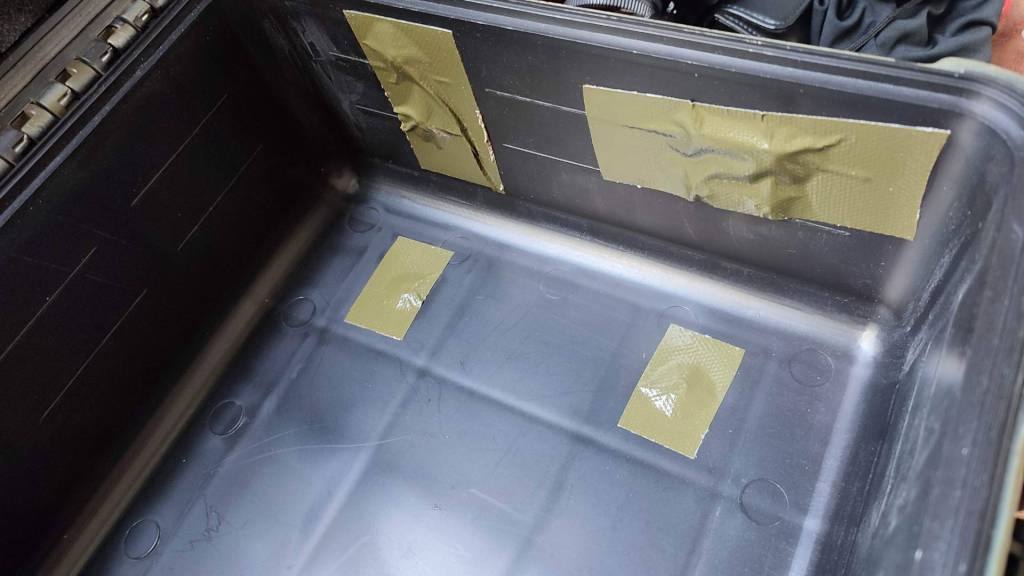
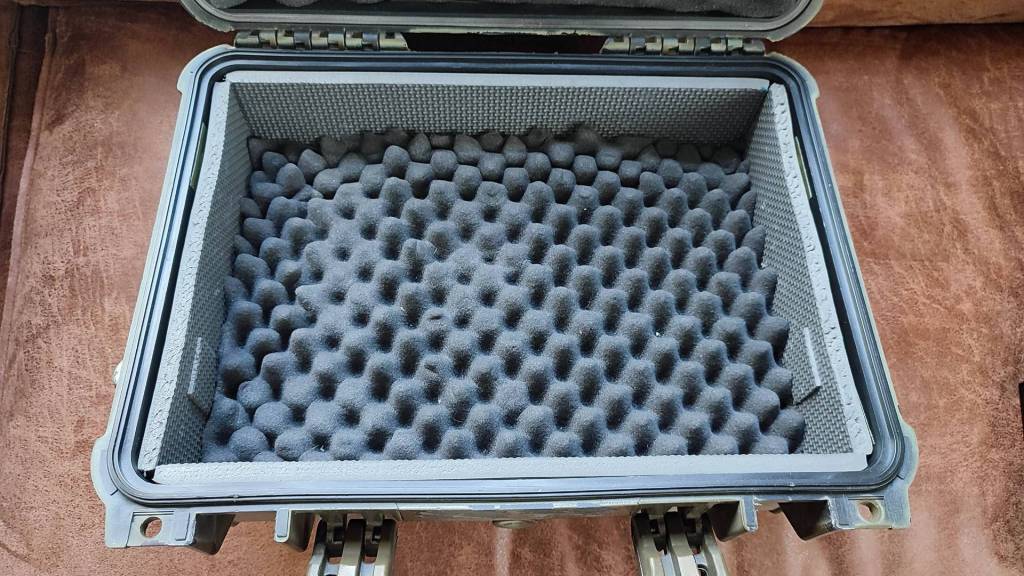
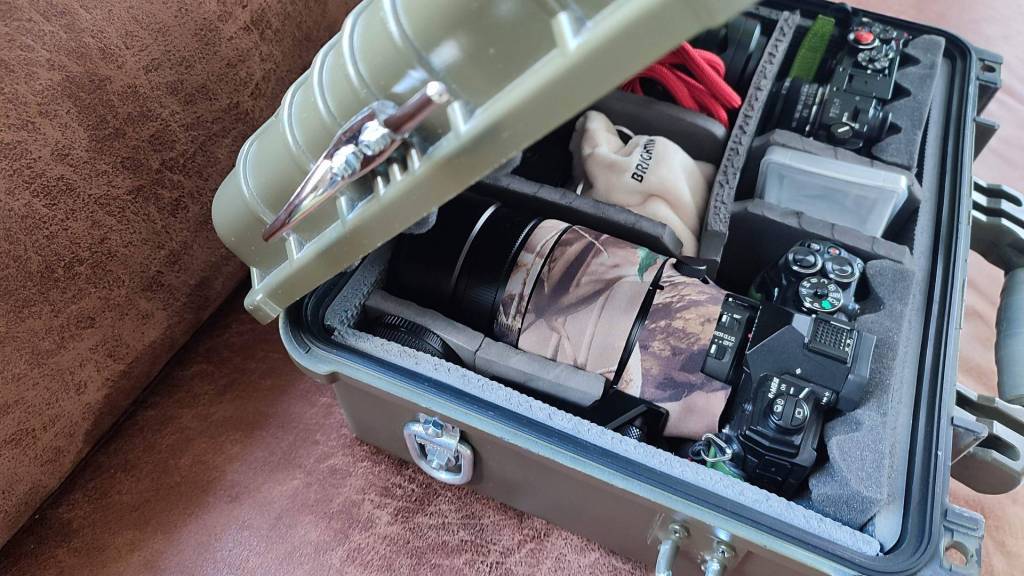
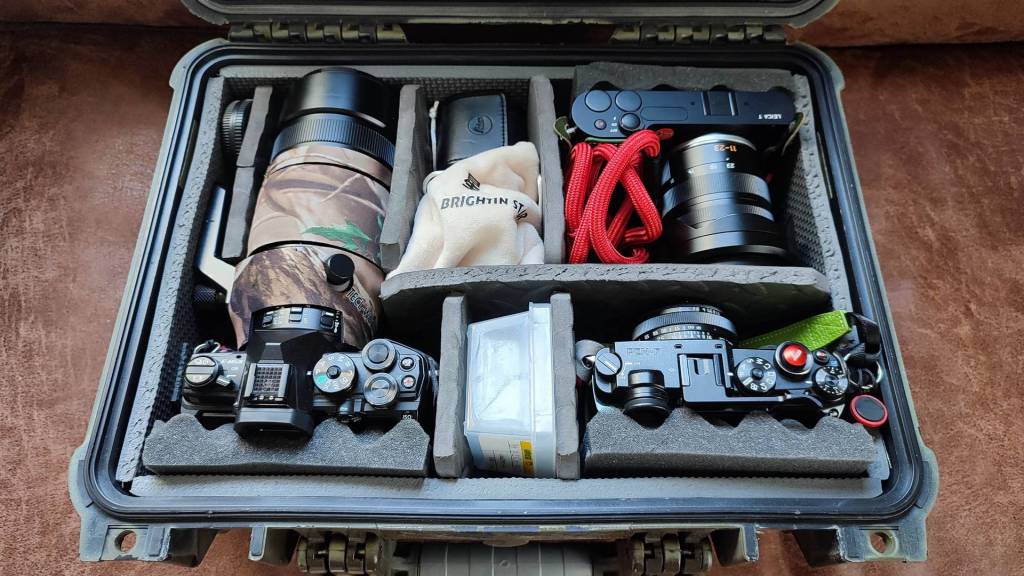
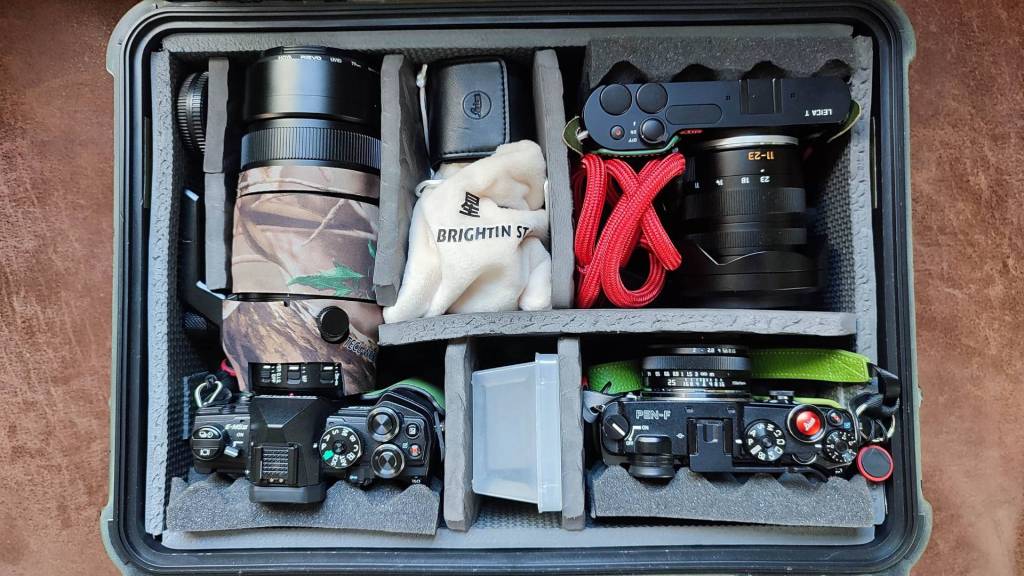
Security:
Over the years, I’ve collected five camera cases: one larger and four smaller ones. Having a case on my bike provides a certain level of security—protection against damage from falls and the safety of a waterproof system. This also offers extra peace of mind at home; given everything happening in the world today, it’s important to protect my expensive gear as best as possible. A waterproof case system is an excellent option for that.
If tied together, they could even provide buoyancy in an emergency. It’s unsettling to think about, but times have become desperate, and it’s unlikely to change in the near future. There are people, known as preppers, who have been preparing for the end of the world for years. Personally, I don’t believe we’re at that point, nor do I think it will happen soon. However, it never hurts to be prepared; you never know what might come your way nowadays.
Discover more from Open Source Photography
Subscribe to get the latest posts sent to your email.


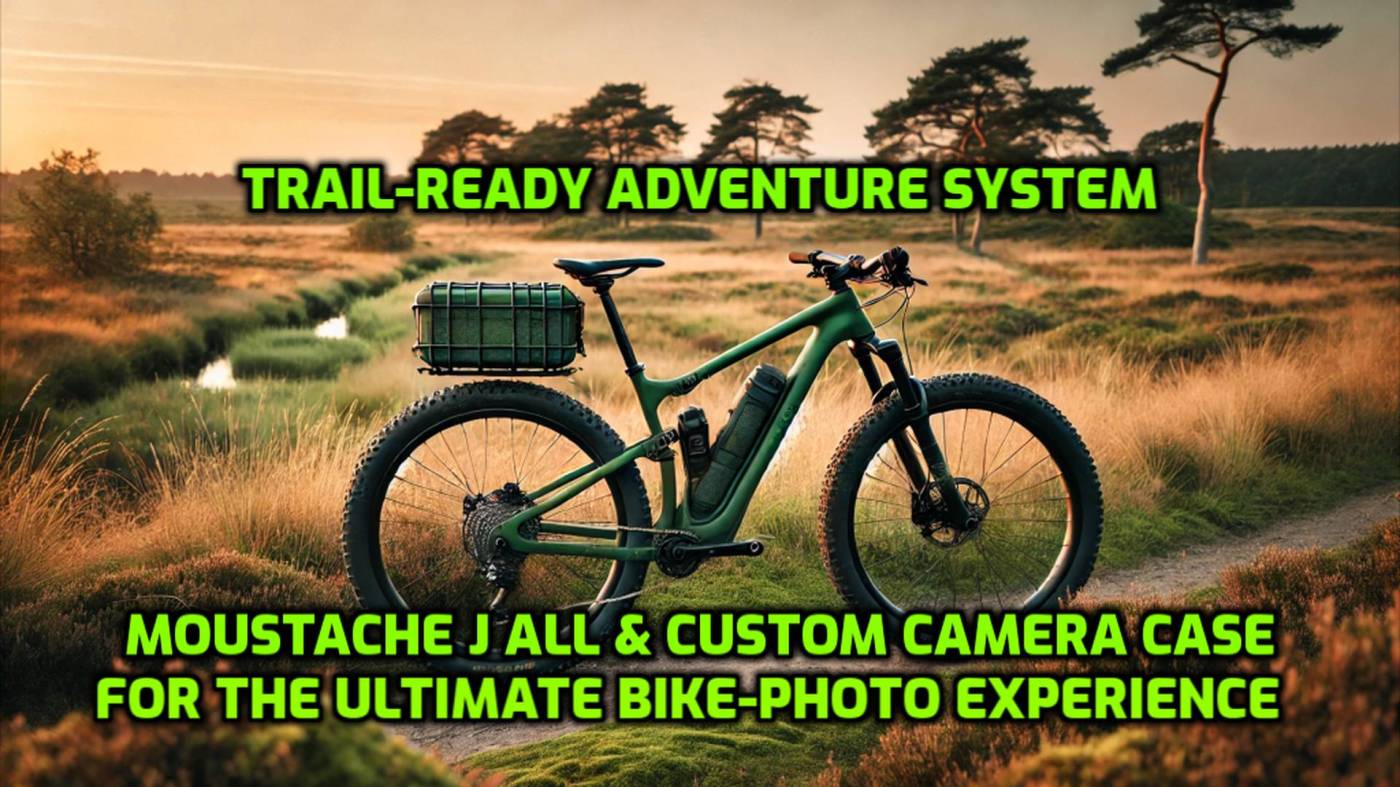

It looks like you found the perfect solution for both bicycle and case. We love our E-bikes and while they are not in the category of the one you show, they are a great tool. Have a great Monday. Allan
LikeLiked by 1 person
Hey Allan, I spent a long time considering getting a bike like yours after seeing it on your website. So I went to the bike shop and tested a few models. The problem is my bad hips, knees… pretty much everything, really 🙂 In the end, a step-through model turned out to be the best for my support and gave me the least pain while riding. From there, I started looking for a bike with more power to handle my weight and a fair amount of camera gear, plus it needed to handle forest trails, tree roots, and longer distances comfortably. And that’s how I ended up with this bike. Otherwise, I probably would’ve made the same choice as you—but unfortunately, I’m not quite as “young” as you all are 🙂
Have a great day Allan !
Marc
LikeLike
The choice has to be right for you Marc and your ride looks great. Not sure how much longer I’ll be able to fold and transport the bikes, but we are enjoying while we can
LikeLike
Another one in the spam box 😦 – sorry, Allan!
Yes, it definitely needs to feel right. A foldable model can be convenient, of course, but if it becomes too awkward or heavy, that’s no good either.
Have a great day, Allan!
LikeLiked by 1 person
I am very impressed. I know several photogs that use e-bikes, with all types of configurations. The Dept. of Natural Resources here will allow some types on wildlife manages ‘wide dirt’ roads. Lots of paperwork but I’m told it’s worth it if you have a mobility issue.
LikeLiked by 1 person
Hey Ted, By moving more without overstraining myself, my muscles are strengthening again, which in turn supports my hip—it’s a positive cycle. I also avoid the stress of traffic, and once I’m at my destination, I can cover a larger area than if I were on foot, plus I can carry more equipment with ease.
LikeLiked by 1 person